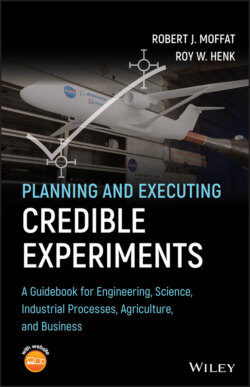Читать книгу Planning and Executing Credible Experiments - Robert J. Moffat - Страница 41
2.4.6 Listening to Our Theoretician Compatriots
ОглавлениеExperimentalists and theoreticians need each other.
Richard Feynman, whose quote leads this chapter, was an experimentalist as well as a theoretician.
Einstein, whose paraphrased quote lead off Chapter 1, received his Nobel Prize for explaining experiments on the photoelectric effect. Einstein's theory of Brownian motion showed that prior experiments provided indirect evidence that molecules and atoms exist.
Yet just as Feynman stated, Einstein's theory of general relativity was “just a theory” until Arthur Eddington gave it experimental verification during a total solar eclipse in 1919.
NASA provides a good example of the interdependence of theory and experiment. The National Advisory Council on Aeronautics (NACA) was the precursor of NASA; “Aeronautics” is the first A of NASA. As airplane designs rapidly advanced during the 1900s, NASA deliberately adopted a four‐pronged approach: theory, scale‐model testing (wind‐tunnel experiments), full‐scale testing (in‐flight experiments), and numerical simulation (computational models verified by experiment). Each of the first three prongs have always been essential (Baals and Corliss 1981). Since the 1980s, numerical simulation has aided theory. Theory and experiment need each other. Since our numerical colleagues often refer to their “numerical experiments,” we do advocate an appropriate way to report the uncertainties of their results, just as we experimentalists do.
The science of fluid flow remains important, as another quote (from a personal letter) from Feynman makes clear:
Turbulence is the most important unsolved problem of classical physics.
Feynman spoke of basic turbulence. Turbulence can be further complicated by heat transfer; yet more complicated by mass transfer; yet more by chemical reactions or combustion; yet more complicated by electromagnetic interactions. Turbulence is key for weather, for breath and blood, for life, for flight, for circulation within celestial stars and their evolution. Turbulence remains unsolved to this day.
To consider more viewpoints, we include three panels:
Panel 2.1, “Positive Consequences of the Reproducibility Crisis”
Panel 2.2, “Invitations to Experimental Research, Insights from Theoreticians”
Panel 2.3, “Prepublishing Your Experiment Plan”
This text focuses on experimental strategies, planning, techniques of analysis, and execution. That is our expertise, in addition to thermo‐fluid physics. We have taught experimental planning to students in many fields using draft notes of this text for more than 60 years.
